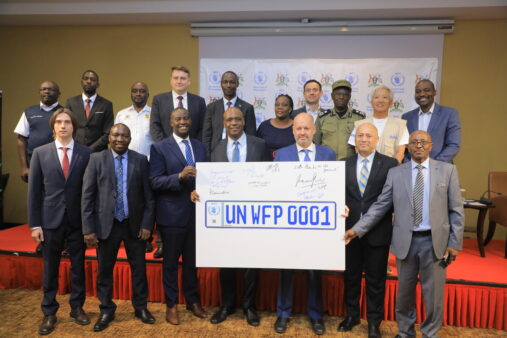The month of March marks 4 years since Your Excellency on March 18th 2020, ordered the greatest part of the country shut down due to the Covid-19 pandemic, effective March 20th 2020.
The country would subsequently go into a series of openings and closures, until early January 2022 when the country and the economy fully re-opened. Compared to the region and many other countries, thankfully the loss of lives was contained. There were also many measures by the government to reduce on the non-health effects of Covid-19 such as the distribution of free food and relief funds, as well as several measures by the Central Bank to restructure loans, which saved several businesses from going down under.
On the health front, there were massive government-led vaccinations as well as massive health education spearheaded by you. Thanks to this show of patriotic leadership, Uganda, resiliently emerged from the pandemic.
Your Excellency, we were delighted to learn, during your recent national address on the eve of the 38th NRM victory anniversary celebrations that this economic recovery continues⏤ the economy grew to UGX.184.89 trillion (US$ 49.5 billion) in the financial year 2022/2023, up from UGX162,750 billion (US$ 45.6 billion) registered in financial year 2021/22. Building on this momentum, the size of the economy is projected to grow to UGX204.9 trillion (USD 55 billion) by the end of the financial year 2023/24 and then leap to UGX. 225.5 trillion in the financial year 2024/25 (equivalent to USD 60 billion).
Specifically, for the tourism industry we were elated to learn that as of the end of FY2022/23, there was a 9% increase in sector earnings from USD 978.35 million in the financial year 2021/22 to USD 1,066.41 million.
This recovery is partly built on the recovery of occupancy rate for hotels that were hit by Covid-19 from 51.9% in 2019 to 20.1% at the end of 2020, but have since recovered to 33 per cent at the end of 2021 and 46.9 per cent at the end of 2022.
However, as the private sector, we do strongly share in your sentiments that although the Ugandan tourism sector has remarkably recovered, it is capable of doing even much better, which is why we are excited at the ambitious government agenda, as laid out in your speech, to increase tourism receipts to USD 5 billion per annum by 2028.
We also share in your observations that with an estimated value/impact of USD2 billion in 2019 Uganda’s market share of the global tourism sector is disproportionate ⏤ below 0.1% of the global industry GDP impact of USD9.5 trillion as of 2023 and at below 0.15% of global international arrivals of approximately 1.3 billion at the end of 2023.
Why are we performing below potential?
Your Excellency, you may not be aware, but while it is true Uganda is on the path to recovering the pre-Covid numbers, it is key to remember that we are lagging behind all our key regional peers. According to a recent Ministry of Tourism, Wildlife and Antiquities (MTWA) report, the East African Community (EAC) attracted 5.2 million tourists in 2022. While on average in 2022, tourist arrivals to the EAC recovered to 60% of pre-pandemic levels, with Tanzania, Kenya and Rwanda recovering the most with 95%, 73% and 68% respectively, Uganda, had by the end of 2022 recovered only 52.8% i.e. 814,598 out of the 1,542,620 visitors registered in 2019.
Of these only 11.7% of the 2022 visitors, were leisure tourists, which is just about a third of the 30% of the 2024/25 target.
This is even though Uganda’s rare and unique tropical equatorial climate and its unique landscapes are the bedrock of exceptional natural attractions- both in quantity and quality. We for example are one of the most primate-rich countries in the world with more than 50% of the World’s remaining population of mountain gorillas. Our 10 National Parks; 12 Wildlife reserves; 5 Community Wildlife Management Areas; and 13 Wildlife Sanctuaries, as well as numerous savanna, forest, and wetland settings, create the ultimate Authentic African Safari experience where visitors come face to face with “The Big Five + 2 ” – lion, leopard, rhino, elephant, buffalo, chimpanzee and mountain gorilla– as well as giraffe, zebra, hippopotamus, crocodile, and more than half of all bird species found in Africa.
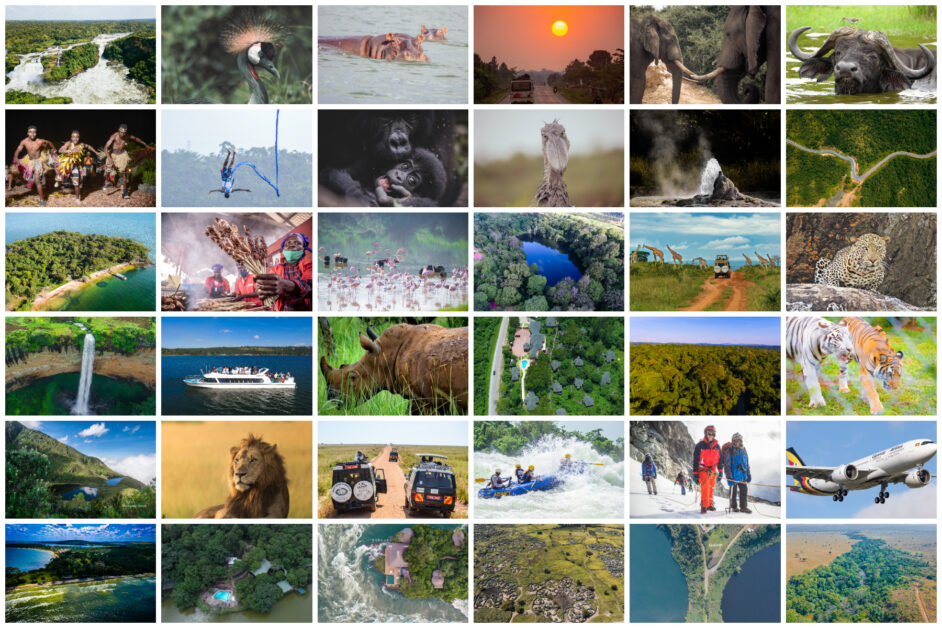
Uganda also harbours several unique tourism assets such as the Source of the Nile, the world’s longest river; the Rwenzori Mountains- the only snowcapped mountains on the African Equator and 3rd highest mountain in Africa; Kasubi Royal Tombs of the great Buganda Kingdom and Bwindi Impenetrable National Park. We are also home to 45% (12,000 square miles) of Lake Victoria, Africa’s largest lake the world’s second-largest freshwater lake and the world’s largest tropical lake with beautiful beaches and over 100 habitable islands, many of them largely pristine and teeming with primates, rare birds and hundreds of plant species.
This is in addition to being home to Africa’s first Christian Martyrs ―The Uganda Martyrs; 650 designated cultural heritage sites and monuments; the most friendly and hospitable people as well as delicious organic food and drink, and the list goes on.
Your Excellency, despite all these unique competitive advantages, Uganda’s tourism sector continues to perform comparatively below some of our African competitors who are arguably less gifted by nature.
Your Excellency, we strongly share in your vision of creating a robust USD 5 billion tourism sector in the medium term as we work towards USD 12 billion Vision 2040 targets.
While we are yet to be fully made aware of the government’s plans for achieving this ambitious agenda, Your Excellency, as the people on the ground in the sector, we would like to bring to your attention some of the key things that we believe, need URGENT fixing, if Uganda is to firmly get back on the road to full recovery and accelerate towards the USD5 billion targets.
These urgent interventions have been put under a collective theme: “Accelerating post-pandemic recovery⏤ towards a USD 5 billion tourism sector”.
1. Suboptimal government investment in the tourism sector
For every tourism destination to thrive, there are 5 key ingredients, that ought to be paid attention to. These are attractions/activities (what to see, where to go), accessibility (how to get there), amenities (supporting infrastructure and enablers), accommodation (where to stay) and awareness which is about creating wide stakeholder/tourists knowledge about the above 4As in a way that stimulates demand and subsequently consumption and revenue for the various players across the entire ecosystem and value chain. All the above, require significant investment, from both the government and the private sector.
We believe, the perennial below-potential performance of the sector comes down to under-investment by the government, which also has a knock-on effect on private-sector investments.
MTWA in its FY2022/23 Tourism Development Programme Annual Performance Report reports that while in the first three years of the NDP III period of 5 years (FY 2020/21 – 2024/25), the government was expected to have invested a total of UGX 2.906 trillion, this didn’t come to pass. Only a cumulative total of UGX 576 billion (just 20%) was approved as Government funding. This includes the UGX 238 billion in non-tax revenue collections from the Ministry and its agencies.
The report also notes that for example during the FY 2022/23, only UGX 199 billion was appropriated against the NDPIII planned expenditure of UGX 635 billion translating into just 31 percent. Of this, only UGX180.6 billion (91%) was actually released. The marketing component only received UGX24.5 billion⏤ a mere 33% of the Programme’s budgeted UGX73.54 billion.
Certainly, the UGX248.7 billion allocated for FY2023/24 is also below NDP III targets.
Needless to mention, government investment towards a suitable environment, is a major driver of private sector investment. As such on the private sector investment front, there is also a visible disproportionate flow of investments. According to Statistics from Uganda’s Investment Authority (UIA), the tourism sector only received 3.5% of all licensed projects in 2019/20. This low sector private sector investment applies to both investments by indigenous Ugandans (4.5%) and Foreign Direct Investment (3.5%). As such, according to UIA, the sector’s share of planned jobs is only 2.3%.
Suboptimal investment by the government and private sectors, to a great extent does negatively impact the competitiveness of Uganda as a destination for tourists and tourism investment. Underinvestment is also responsible for most of the challenges that plague our sector, such as inadequate and unskilled manpower/personnel, low presence of international branded hotel operators, poor tourism infrastructure, undeveloped and narrow product range etc.
Our Recommendations
Mr. President, to bring to life the government’s agenda to increase tourism revenues to USD 5 billion, we invite you to relook at the planned investment by the government in the tourism sector.
In FY2023/24 for example, the tourism sector was allocated UGX248.7 billion out of a total national budget of UGX52.7 trillion, an equivalent of only 0.47%. According to the Budget Framework Paper for FY2024/25 presented to Parliament, while the overall budget is expected to grow by 3.6% from UGX52.7 trillion to UGX54.6 trillion, the allocation for the tourism sector remains unchanged at UGX248.7 billion- equivalent to 0.46% of the budget.
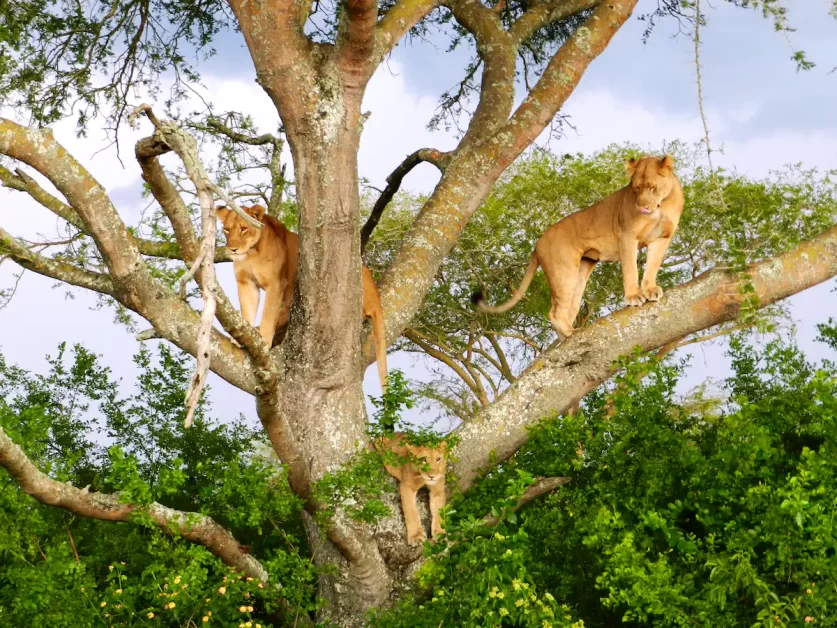
Over the next 5 years, tourism sector budget allocations are projected to averagely increase by 10% annually to UGX297.2 billion, UGX352.7 billion, UGX413 billion and UGX481.9 billion in FY2025/26, FY2026/27, FY2027/28 and FY2028/29 respectively, when you factor in the inflationary pressures (an average of 5%), these increments cannot bring about the desired change. It also remains proportionately too low, compared to the sector’s contribution to GDP.
We therefore would like to recommend that:
- Increase tourism budgets to between 25% and 50% of industry contribution to GDP: Your Excellency, as the country seeks to fully recover from the effects of the pandemic, we strongly believe that the tourism sector presents one of the fastest means of recovery. According to the World Bank, every USD1 spent by a foreign tourist generates an average of USD2.5 of GDP- both directly and indirectly along the value chain. This means the tourism sector has higher returns on investment, compared to the USD 2.3 of GDP generated per USD1 earned from traditional exports from Uganda. Another 2019 study by the World Bank⏤ the Statistical and Economic Analysis of Uganda’s Tourism Expenditure and Motivation Survey 2019, estimated that if an additional 100,000 leisure tourists had visited Uganda in 2019, this would have added nearly USD 100 million to tourism exports, equaling 1.5 per cent to total exports, and generating additional value added in the range of 0.4 per cent to 0.9 per cent of GDP.%! Accordingly, therefore, it is our prayer and recommendation that direct government expenditure on tourism be incrementally increased to at least between 25% to 50% of its GDP contribution. This can be increased incrementally to peak at 5.6% of the national budget. This will provide enough resources to further unlock the sector’s full potential and contribution to the economy as well as the NRM Government’s transformation agenda.
- Facilitating Private Sector To Run Supplementary Destination Marketing Efforts: As earlier mentioned, Uganda’s tourism sector post-pandemic recovery is lagging behind that of our regional peers and competitors, namely, Kenya, Tanzania and Rwanda. Your Excellency, the private sector has for a long time been, out of their own pockets supplementing government efforts on Destination Uganda marketing efforts. However, since the pandemic, very few players can do this anymore. We, therefore, recommend and pray for a special three-year direct funding allocation to the private sector association to facilitate marketing efforts such as agent/partner recruitment, participation in major international tourism expos and fairs, visual content bank development as well as direct marketing campaigns.
- Annual Presidential Tourism Marketing Expedition: As Destination Uganda’s No.1 Chief Marketing Officer, the private sector would like to invite you for an Annual Presidential Destination Marketing Expedition, that brings together all sector stakeholders and well-wishers of Uganda to familiarise themselves with what Uganda, the Pearl of Africa has to offer.
2. Urgent Tarmacking Of Bwindi and Mgahinga Tourism Roads
Your Excellency, as mentioned earlier accessibility or how easy it is to get to a destination, is one of the key determinants of a positive tourism experience.
In this regard, we applaud the government’s investment in fixing a greater percentage of key tourism-related transport infrastructure such as the 600km of tourism/oil and gas roads, the Paraa Bridge across the R. Nile as well as investment in ferries across various River Nile crossings as well as to the various islands in Lake Victoria. We also applaud government investment into a national airline with direct flights to Uganda and the ongoing construction of an alternative Kabale International Airport in Western Uganda.
We however wish to bring to your attention the worrying and impassable state of the Kisoro -Nkuringo-Rushaga-Ruhija-Bwindi-Buhoma-Kihihi-Ishasha-Katunguru and the Kisoro to Mgahinga roads in south-western Uganda.
Your Excellency, the Kisoro -Nkuringo-Rushaga-Ruhija-Bwindi-Buhoma-Kihihi-Ishasha-Katunguru and the Kisoro to Mgahinga roads are a key link to the Bwindi Impenetrable National Park (3rd most visited National Park) and the Mgahinga National Park. The two parks are among others known for being home to the Gorilla, one of the most treasured tourist attractions and a major revenue driver for Uganda’s tourism sector. The Kisoro -Nkuringo-Rushaga-Ruhija-Bwindi-Buhoma-Kihihi-Ishasha-Katunguru is also an important link between the two parks above, to the Queen Elizabeth National Park as well as Murchison Falls National Park. Relatedly, the Kisoro Airfield, run by the Uganda Civil Aviation Authority (UCAA) is in a sorry state, further compounding the challenges of travelling to these two key national parks. As a result of accessibility challenges, Uganda is beginning to lose a significant number of gorilla clients to neighbouring Rwanda.
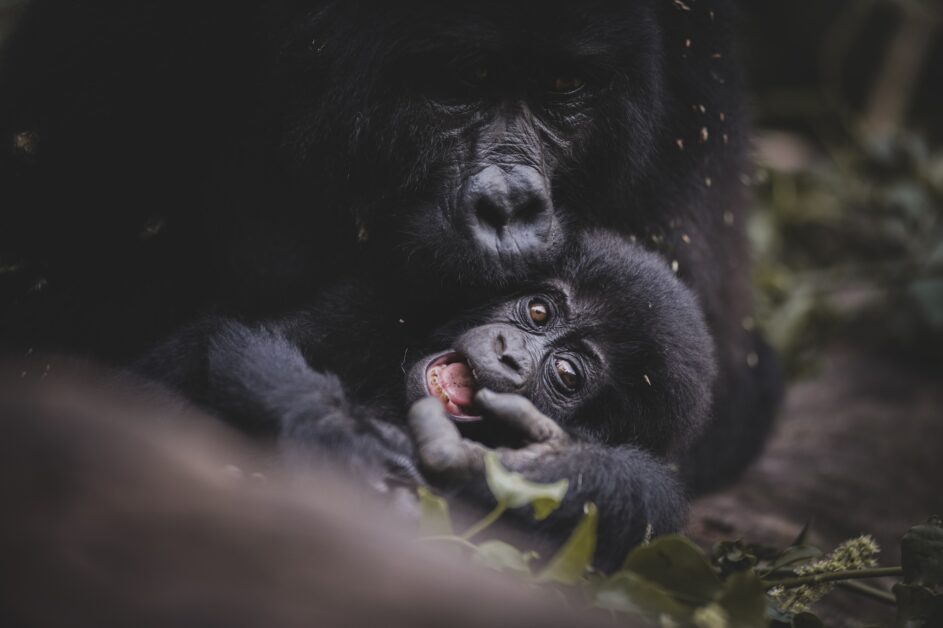
The Kitgum-Karenga Road in North Eastern Uganda which is also a major link between West Nile and Northern Uganda to Kidepo National Park also needs urgent fixing, alongside the Kidepo Airstrip.
Relatedly, there is an immediate need to fix other tourism-enabling infrastructure such as broadband connectivity as well as reliable access to water and electricity.
Our Recommendations
- Your Excellency, we are aware that the Kitgum–Kidepo (116 Km), Lake Bunyonyi-Kisoro-Mgahinga (74Km), Karenga-Kapedo-Kaabong (70 Km) and Kisoro-Rubuguri-Muko (65Km) are on the government’s plans for tarmacking, but we pray for fast-tracking of the tarmacking of these vital roads. We also pray for the urgent prioritisation of the repairs of the Kisoro Airfield and the fast-tracking of the expansion of the Kidepo Airstrip.
- Regarding broadband connectivity especially in the national parks, we understand that while the Uganda Communications Commission (UCC) through its Rural Communications Development Fund (RCDF)/ Uganda Communications Universal Service and Access Fund (UCUSAF) has been trying to improve connectivity in the national parks, they have been challenged by steep ground rental fees by the Uganda Wildlife Authority (UWA). We would like to pray for your intervention in this matter, to improve connectivity in the national parks.
3. Increased cost of doing business with Uganda Wildlife Authority
Your Excellency, as you are aware, a very large percentage of our tourism sector is wildlife-driven. As such permit fees, set by the Uganda Wildlife Authority (UWA) to access its facilities, are a major cost centre for the industry.
The Uganda Wildlife Authority (UWA) on 17th January 2024, announced a new tariff structure that variously increased the cost of accessing various services in the national parks. Amongst the key changes is a 20% increase in the cost of gorilla tracking for East Africans (including Uganda) and a 16.7% and 14.3% increase for Foreign Residents and F oreign Non-Residents respectively. The cost for Chimpanzee tracking has also been increased by 20%, 33.3% and 25% for East Africans, Foreign Residents and Foreign Non-Residents respectively. The cost of birding also went up by 50%, 20% and 33.3% for East Africans, Foreign Residents and Foreign Non-Residents respectively.
We however applaud UWA for introducing a new “Rest of Africa” which reduces by 33.3% the cost of gorilla tracking and gorilla habituation for other African tourists, outside of East Africa. These were previously classified as Foreigners. This supports Destination Uganda’s efforts to attract more intra-African visitors.
Your Excellency, while AUTO fully recognises and is mindful of the importance of maintaining an adequate pricing regime by UWA, to enable it to perform its duties, the implementation of price changes must be aligned with the nature of the business.
It is a well-known fact that worldwide tourists pay up to three years in advance for services, especially Gorilla and Chimpanzee tracking. Most of our members also have long-running definitive contracts with their foreign travel partners that among others have the cost of permits locked-in. Thankfully, implementation of this new tariff regime which was set to start in July 2024, has since been postponed to June 2026 after engagements between the Association of Uganda Tour Operators, UWA and the Ministry, but not without interruptions in the business.
Besides the need for adequate forward guidance on tariff changes⏤ of at least 1-2 years, the timing of the implementation of the changes is also wrong.
As mentioned earlier, the sector is still reeling from the effects of the pandemic and Uganda’s tourism sector recovery is trailing that of our major competitors in the region. For example, the occupancy rate for hotels during the year 2022 was 46.9%. but this is still below the 51.9% registered in 2019, before the pandemic. Outside Kampala, occupancy rates are still below the average⏤ Eastern (50.2%), Northern (48.5%), Western 33.8% and Central (excluding Kampala) at 30.1%.
Secondly, the sector still faces other key challenges such as:
- Persistent Travel Advisories: There are several travel advisories against travel to Uganda from major source markets such as a Level 3 (Reconsider Travel CTO) Travel Advisory of December 2023 by the U.S. State Department; a Foreign, Commonwealth and Development Office advisory of 29th December 2023 as well as a 14 November 2023 advisory by the Australian Government and a another by the Canadian government.
- Poor Destination Brand Awareness: Destination Uganda launched a new brand⏤ Explore Uganda, which, due to low funding, is yet to be rolled out internationally across our major markets.
- Uncompetitive Local Funding Regime for the Tourism Sector: The average lending rates for commercial banks in Uganda range from 16-36% per annum which is not conducive to long-term investments. The Development Banks, which, however, lend at an average of 12-16% per annum are few and with limited resources. While total commercial bank lending between 2019 and 2023, grew 41.8% from UGX14.1 trillion to UGX20 trillion, lending to tourism has grown only by 9.4% from UGX305.8 billion to UGX334.5 billion. As a share of total commercial bank lending, the sector’s portion of loans, despite being one of the lowest- 2.1% in 2019, sunk even further to 1.7% in 2023. The tourism sector is also still grappling with Non-Performing Loans and in fact, has one of the highest NPLs to date.
| Sector | Dec-22 | Mar-23 | Jun-23 | Sep-23 | Dec-23 |
| Agriculture (%) | 5.13 | 5.48 | 5.93 | 5.18 | 4.09 |
| Mining and Quarrying (%) | 0.81 | 0.36 | 0.33 | 3.22 | 0.52 |
| Manufacturing (%) | 4.20 | 4.68 | 6.21 | 5.37 | 5.09 |
| Trade and Commerce (%) | 7.71 | 9.69 | 7.36 | 8.08 | 6.30 |
| Transport and Communication (%) | 2.85 | 2.96 | 2.80 | 2.63 | 2.24 |
| Tourism (%) | 11.28 | 17.52 | 15.08 | 16.36 | 12.64 |
| Building, Construction and Real estate (%) | 6.23 | 7.02 | 7.48 | 5.98 | 5.58 |
| Electricity and Water (%) | 16.93 | 2.75 | 3.17 | 2.25 | 2.17 |
| Business Services (%) | 7.33 | 9.06 | 11.48 | 10.19 | 7.13 |
| Community, Social and Other services (%) | 4.58 | 4.19 | 5.33 | 6.78 | 6.78 |
| Education services (%) | 4.61 | 4.83 | 6.17 | 8.44 | 7.24 |
| Personal and Household loans (%) | 2.39 | 2.66 | 2.33 | 2.40 | 2.69 |
| Other activities (%) | 49.13 | 62.08 | 44.84 | 49.15 | 22.09 |
According to Bank of Uganda figures, NPLs for the tourism sector were at 11.28%, 17.52%, 15.08%, 16.36% and 12.64 for December 2022, March 2023, June 2023, September 23 and December 2023 respectively. That is an average of 14.57% on average. Compared to other sectors (such as agriculture (5.16%), Manufacturing (5.11%) trade and commerce (7.83%), building and construction (6.46%) and personal and household loans (2.49%), the tourism sector NPLS are 3 times above the normal.
Our Recommendations
- While AUTO fully supports and acknowledges that for the Uganda Wildlife Authority (UWA) to be effective, it must charge optimally for its services, it is however, our prayer that the timing of the implementation is revisited and delayed until FY2025/26. This will allow for enough time for the sector to fully recover on one part, but also adequately plan for and align our stakeholders on the planned tariff changes. Moving forward, UWA should make it a standard practice to have sufficient consultations as well as forward guidance on tariff revisions of not less than 12 months.
- There is also a need for an urgent review of the entire cost of doing business in the tourism sector to harmonise and accelerate post-pandemic tourism recovery.
4. Uncompetitive Taxation Regime of the Tourism Sector
Your Excellency the hotels/hospitality sector, is one of the major facets of a thriving tourism sector. A conducive regulatory and fiscal regime is therefore key for the survival of this sector. In Uganda however, the sector has to deal with 25 types of central and local government taxes, levies, licensee fees and statutory contributions. These add to the cost of doing business in Uganda, which already has the highest tax regime in the East Africa Community, according to PwC Uganda.
Our Recommendations
- There is an urgent need to revisit this taxation regime, to remove the duplicity as well as align with our regional competitors to reduce the cost of doing business and increase Destination Uganda’s competitiveness to both visitors and investors.
- The tourism sector, according to the International Trade Centre⏤a multilateral agency which has a joint mandate with the World Trade Organization and the United Nations through the United Nations Conference on Trade and Development, is an export sector, albeit an invisible export. It is a source of foreign exchange earnings; it grows a country’s national output and is subject to the rigours of the international marketplace. It is our prayer that just like Ugandan traditional exports attract a zero rate of tax, a special and favourable taxation regime for the tourism sector be explored as part of efforts to make Destination Uganda more competitive.
CONCLUSION
Your Excellency, AUTO strongly believes in your vision to catapult tourism sector earnings from the current USD1.1 billion, to reach USD5 billion by 2028. Our beliefs are backed by recent studies that show a much higher return on investment for every dollar invested in the tourism sector.
This however calls for a business-unusual approach. There is a need to significantly invest in boosting the competitiveness and awareness of destination Uganda on one hand, as well as in enhancing the tourism business climate and improving the tourist experience. It is very evident that for Uganda to be able to get anywhere close to the USD5 billion targets by 2028 and USD12 billion targets by 2040, more than ever, there is a need to align national efforts and resources, as well as policy and regulation to build long-term tourism sector competitiveness, resilience and sustainability.
Investing in the right tourism infrastructure, activities and products on one hand and enabling policies and regulatory environment on the other, will enhance Destination Uganda’s competitiveness and reputation, increase both visitor and investor satisfaction, and ultimately increase the volume and value of both visitors and investment to Uganda, in line with the overall Tourism Development Programme objectives.
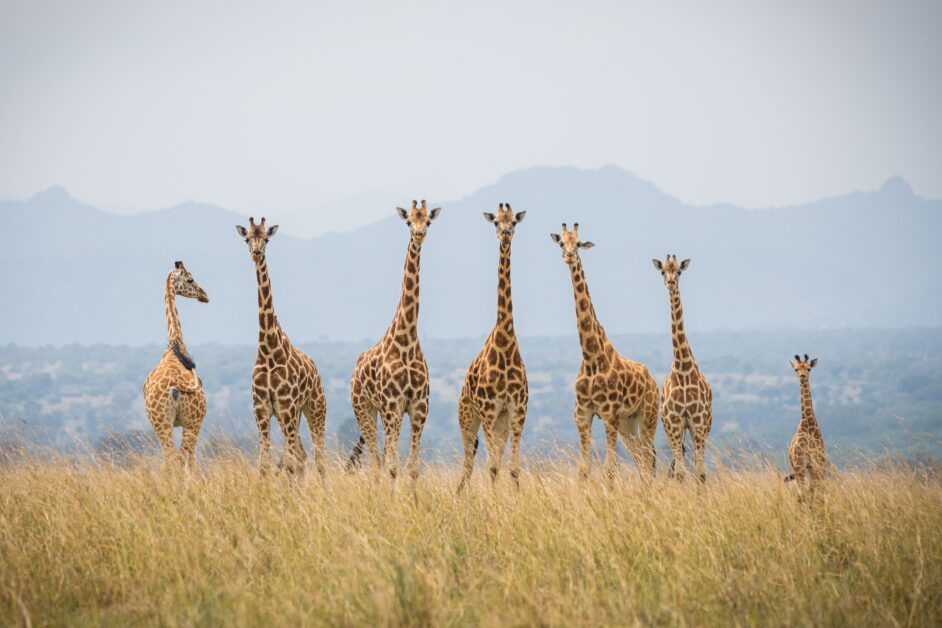
Otherwise, investing approximately 0.5% of our budget in a sector that we expect to contribute 8.5% of GDP in the medium term, is tourism without ekibaro (cura, aimar, otita)⏤ as your, Excellency, likes to say.
Your Excellency while we acknowledge the impact of COVID-19 on the resource envelope and the performance of the economy, as well as acknowledge and appreciate other public investments into other tourism-enabling sectors such as energy, peace and security as well as transport infrastructure, we wish to reiterate that without directly feeding the goose that lays the eggs, the revolutionary USD 5 billion targets set for 2028, may remain a tall order.
It is our prayer and recommendation that direct government expenditure on tourism be increased to at least 50% of its GDP contribution ⏤ 5.6% before the pandemic in 2019. This will provide enough resources to further unlock the sector’s full potential and contribution to the economy as well as the NRM Government’s transformation agenda.
Your Excellency, as AUTO, we wish to pledge our commitment and the commitment of the private sector entities that we represent, to work with your government to support the efforts to revitalise the tourism sector. We are eager to collaborate closely with your administration, utilising our collective expertise to enhance infrastructure, promote sustainable practices, and elevate Uganda’s global tourism profile.
Lastly, Your Excellency, as we start our year, in light of the recent security-related issues that affected our industry and in light of the other challenges, that the sector continues to face, I would like to once again invite you for a weeklong nationwide tour of our key tourism attractions. As the No.1 Chief Marketing Officer of Destination Uganda, such a visit would not only reinforce confidence in the destination but would also be a great opportunity to exchange fire-side wisdom between yourself and sector leaders, especially in areas of culture.
FOR GOD AND MY COUNTRY
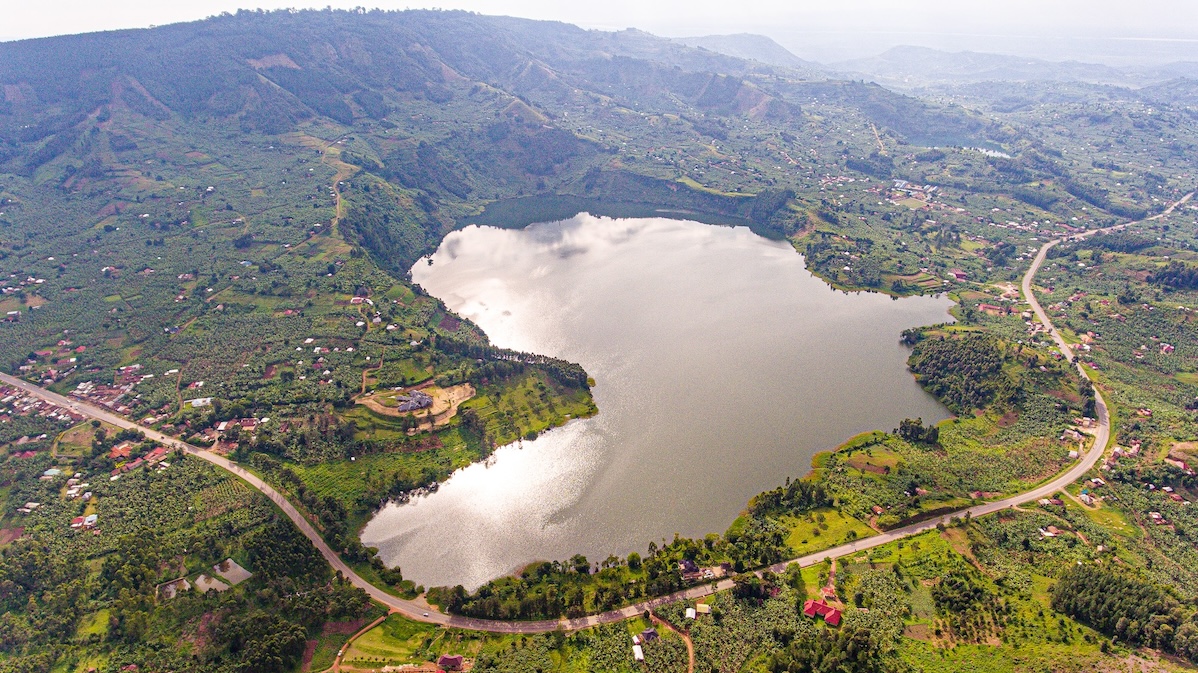
 Absa, ENS Africa, A&O Shearman and Nomura Advise Asahi Holdings on USD 2.3bn Acquisition of 65% Stake in EABL
Absa, ENS Africa, A&O Shearman and Nomura Advise Asahi Holdings on USD 2.3bn Acquisition of 65% Stake in EABL
